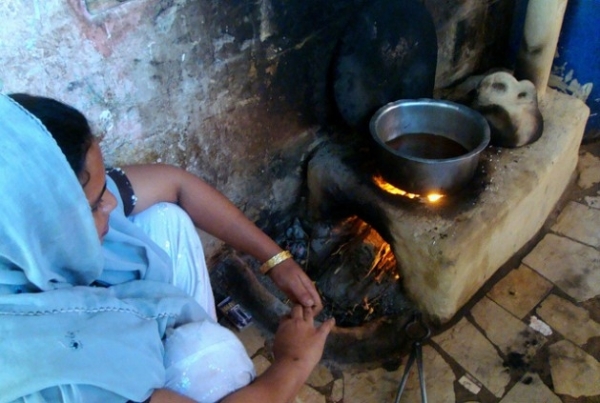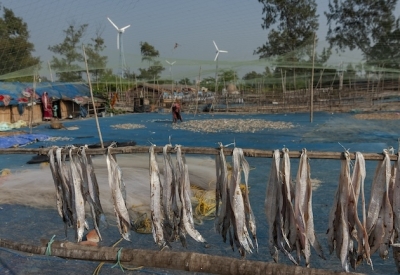WASHINGTON DC, Jul 12 (IPS) — An estimated 2.4 billion people currently lack access to clean cooking fuels, with the majority relying on biomass (firewood, charcoal, dung) to meet household cooking needs. This is only a slight decrease from 2017, when 2.5 billion people lacked access to clean cooking fuels.
Of those who continue to lack this access, the majority—923 million—live in sub-Saharan Africa, followed by 490 million in India. While India decreased its population without access by about 30 percent from 2010 to 2020, Africa has seen an increase of more than 50 percent over the same period, driven by a rising number of poor, tepid government policies to address this issue, and overarching poverty challenges.
These figures are likely to remain persistently high at about 2.2 billion over the next decade, roughly split between India and other parts of developing Asia on the one hand, and sub-Saharan Africa on the other.
Hidden behind these figures are the people who produce the biomass that powers most of this energy use: often it’s women and girls who are tasked with this labor. In this article, the authors discuss why it’s important to see these women and girls—potentially the largest segment of the energy labor force today and in the foreseeable future—as producers and workers.
In understanding them as a formidable workforce of biomass producers, their knowledge and experience can inform ongoing efforts of electrification, clean cooking alternatives, gender rights, and overall poverty alleviation. It is also equally important to recognize this workforce in order to improve its working conditions on the path to building a more inclusive energy workforce toward net zero emissions.
While the United Nations Sustainable Development Goal #7 (SDG 7) draws attention to the need to eliminate the use of non-clean cooking techniques that kill millions each year, the working conditions under which women toil today to produce biomass also merits greater attention.
As the World Bank reported recently, “across most of Sub-Saharan Africa and in parts of China, women are the primary fuel wood collectors,” which is also the case in areas of South Asia. This is time-consuming and physically demanding work that can involve “collecting and carrying loads of wood that weigh as much as 25-50 kilogrammes” and can “take up to 20 or more hours per week.”
Estimating the Size of this Workforce
Just how many women are working in this area? A preliminary estimate—based on data regarding the number of households relying on biomass for cooking and the rate of participation of women in this labor—puts the number at over 300 million. Overall, while there is reliable data on lack of access to clean cooking, reliance on biomass, and deforestation trends, there is a gap in knowledge about the (wo)man power it takes to produce biomass.
This gap may stem from the way issues around biomass are often discussed in the SDG 7 context. For example, data on the lack of access to clean cooking primarily informs solutions to shift cooking norms and electrification pathways and efforts to obviate the need for women to labor in producing biomass, while data on biomass reliance feeds into conservation and land use efforts.
Such efforts, however, tend to overlook women as an energy workforce, even though across sub-Saharan Africa, India, parts of China, and Latin America, women and young girls collect and make the biomass necessary to power their homes, including for heating.
Organizations focused on gender parity, such as SEforAll, come closer to recognizing the work of these women and girls, but they, too, frame their efforts in line with clean cooking initiatives rather than labor conditions or rights. For instance, research on the number of hours spent collecting firewood and preparing meals is used to discuss cultural and gender roles that lead to systemic disadvantages for women and girls.
A missing link in all of these narratives and frameworks is understanding the size and importance of this workforce and how it might inform different strategies.
Embracing a Worker-Producer Narrative
Calculating the number of women and girls in their capacity as biomass producers reframes the perception of them as passive consumers (i.e., cooks) to active self-producers of the household energy sector. This framework can bolster efforts mentioned above in the following ways:
First, it reframes biomass—from an issue singularly belonging to the clean cooking initiative— and places it more broadly in the context of workers’ rights. Despite numerous clean cooking campaigns, poor women and girls will continue to produce biomass for their families for the foreseeable future. As important as it is to make access to clean cooking technologies universally available, what can be done for those producing their own energy in the meantime?
For example, these could be solutions such as creating wood stalls in more accessible areas to reduce collection times, or developing more ergonomic harnesses for carrying the wood to reduce the physical burden of the work. In addition, can more income-generating opportunities be created to help reduce the poverty of these women and girls?
Second, it informs policies around building an inclusive energy workforce. Recognizing that there is already a female-run and -operated energy workforce across the developing world has implications for workforce policies governing the energy transition. For example, when it comes to the ability to tap into this existing labor force, does reskilling apply to this workforce as it does to coal miners?
Moreover, by focusing on improving the labor conditions of women and girl biomass producers, this framework intersects with SDG 5: achieve gender equality and empower all women and girl. Organizations such as the Clean Cooking Alliance that aim to “increase the role of women in the clean cooking sector” and collect data on the number of hours required for biomass production could benefit from such a framework.
Third,research that intentionally includes groups underserved and underrepresented in data can inform policies for a just energy transition. Capturing the number of women and girls producing biomass can lead to important discoveries for improving their lives while informing the energy transition. For instance, surveys and fieldwork to collect the amount of biomass producers could also be used to track energy consumption and production trends that inform electrification efforts.
Many biomass collectors live on the margins or in rural areas, and research geared toward their energy needs can inform, for example, decentralized renewable energy projects and help anticipate their consumption patterns.
This energy workforce comprises some of the poorest people in the world—women, girls, and people of color—and that may partly explain why their labor and working conditions have received relatively less attention.
The latest Intergovernmental Panel on Climate Change (IPCC) report and other research puts the world on a tight timeline for lowering emissions. Existing frameworks for achieving a clean energy transition can be strengthened through approaches that recognize and acknowledge the agency of biomass energy producers made up of millions of women and girls.
Alexandra Peek is a research associate with Columbia University’s Center on Global Energy Policy.
Philippe Benoit is an adjunct senior research scholar with Columbia University’s Center on Global Energy Policy and is also research director forGlobal Infrastructure Analytics and Sustainability 2050.






